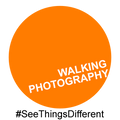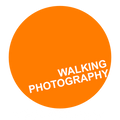Apples to Apples (how to get better photos)


What’s the easiest way to improve your photos?
It’s a question that can conjure up many, many different answers. Hopefully my tuppence worth won’t upset the apple cart!
So what is the best way to take better pictures? Trips to remote and exotic locations? Using filters in camera or in post production? Using different lenses? Buying a new camera?!!!
If you’re anything like me (and you have my sympathies if you are), very little encouragement is needed when it comes to upgrading or “investing” in new equipment! However, if you’re hoping for an excuse to go out and buy that telephoto lens you’ve been eyeing-up for months I am afraid I’m going to disappoint you. My answer to this common question is two-fold and more about the thought process behind taking a picture.
When we see something that grabs our attention it’s so easy to get caught up in it and to automatically start photographing without really thinking. I can be guilty of doing it myself; it could be a red kite flying overhead, where I instantaneously snap away at it, only to realise later the photos are of a black dot in a wash of blue. The key mistake I make in these situations is failing to ask a simple question before taking the photo. That question should be “what is this photo about?” and that’s the question I try to ask before any shot or shoot I do.
Asking this question helps identify what it is you’re trying to say in your photo. As a result you’ll automatically start to consider the photo more carefully, taking more thought to capture it in a clearer, more successful way.
The second thing to think about is remembering to look at the whole picture (in camera). When we look through a lens it’s extremely easy to overlook what’s happening to the area that surrounds the item which initially caught your interest.
Imagine you were walking in the woods and came across a deer. If you allowed the excitement of the experience to overwhelm you, you might start snapping, scared that it will bolt off and you’d be left with no record of the experience. However, in the excitement you’ve taken a ton of photos, all from pretty much the same angle and what you didn’t see before was a dark tree trunk that is obscuring view of the deer and a fern leaf partially covering the deer’s face. The more you look back at this photo the bigger the intrusion those two elements create. Before long, when you look back again at the photo you don’t even see a photo of a chance encounter with a deer just a photo that frustrates you and one that Chris Packham would have a field day with.
Maybe my example is a little OTT but the point is a very real one and I see it all the time. By not allowing yourself to get overwhelmed by the deer sighting, you could then look more calmly at the scene, consider the composition and improve it by re-positioning yourself in a way that removes the previous obstacles. Now you’ve captured a great memory that you can take pride in, with a photo that might even get a nice nod from CP on Spring Watch!
So that’s the easy way to improve your photos, and just the other day I also found a fantastically seasonal example. A box of apples that caught my interest, which I then photographed with my phone. Hopefully you can see the simple process of re-thinking, slightly changing my approach and how these steps improved the visual appeal.
And if you think I don’t get as excited over a box of free apples as a chance encounter with a deer, you’d be very much mistaken!





Leave a comment